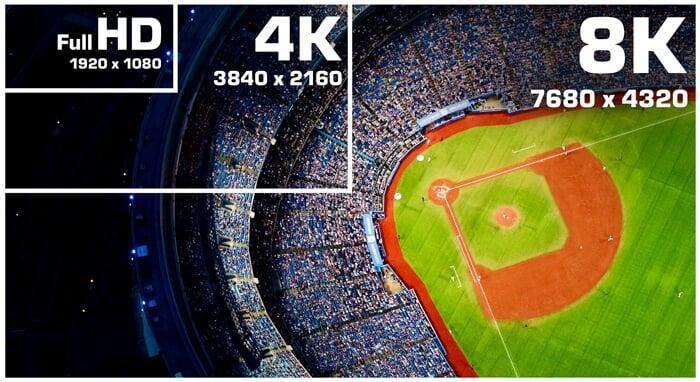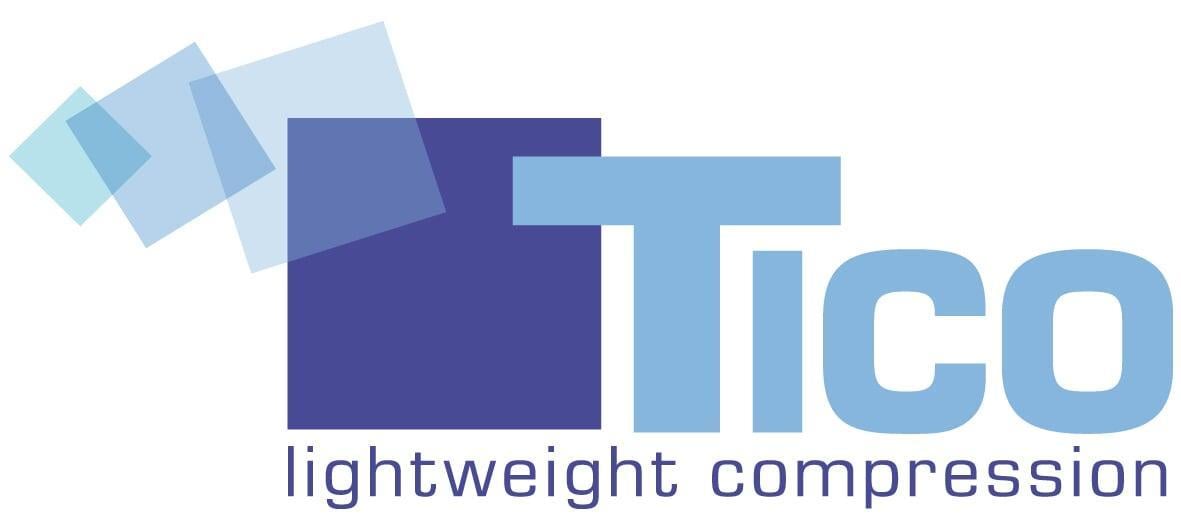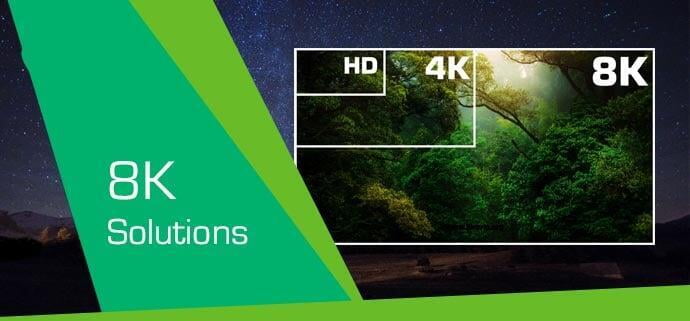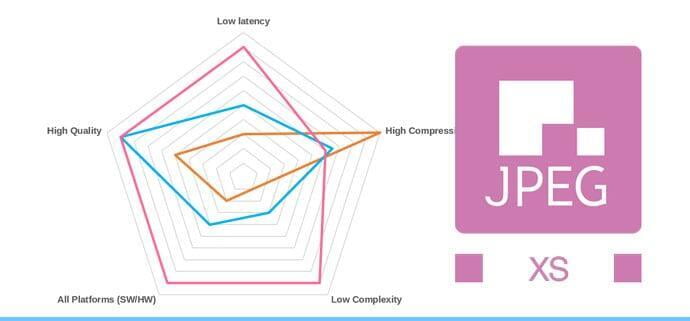Introduction

What challenge derives from that?
1. increasing the amount of cables or2. using expensive, high-bandwidth cables.
Existing solutions for carrying 8K uncompressed
Our suggested Solution: TICO compression
The solution to this issue is a video codec that behaves like uncompressed video in terms of quality, latency and complexity. Lightly compressed storage and transmission remains affordable and manageable within systems and infrastructures. It involves a low-cost hardware upgrade and reduces the renewal of infrastructures for the same power consumption.
What is TICO compression
Available in FPGAsand on CPU & GPU, intoPIX TICO is a lightweight mezzanine compression codec that has been specifically designed to achieve lossless quality at low compression ratios, for a very low FPGA complexity and cost. It is an intra-frame codec, which makes it perfectly suitable for low-latency applications in comparison to inter-frame codecs that require frame buffers and thus reduce speed. The mezzanine codec’s line-based latency translates into less than 1 millisecond that is induced to the workflow.

TICO SMPTE RDD35 features:
- Robust to multiple en-/decoding generations- Supports 4:2:0 & 4:2:2 workflows up to 12bit- Smallest use of logic & memory (no external DDR), for FPGA (Intel / Xilinx) or ASIC- Runs 8K on CPU & single GPU- Best quality up to 6:1 compression (from math. to visually lossless)- Few pixel lines of latency (less than 1 milliseconds end-to-end)- Embedded downscaler to decode 4K resolution from 8K TICO source without additional processing
TICO over single cable transport schemes
8K TICO on 10GbE
In a time of rising resolutions and the constant need for simplified connectivity (of things), many AV professionals are switching to IP-based infrastructures. TICO compression can reduce the bandwidth of an 8K 60p video stream to less than 8Gbps while remaining lossless quality and inducing virtually no latency. This enables users to run it over standard 10GbE networks (and CAT6 cables & switch) – a currently extremely cost-effective installation with the additional advantage of simple cable length extension by adding a switch every 100 meters.
A standardized way to transport 8K with TICO over RTP IP (like SMPTE ST 2110)
8K TICO on 12G-SDI
Especially the broadcast industry is massively invested in SDI infrastructures and prolong a costly conversion to Ethernet. To avoid the management of more cables, complex interfaces, additional complexity and the splitting of one stream over multiple cables, TICO 8K compression can enable its users to retain their current 16x3G-SDI or 4x12G-SDI cabling and still transport 8K video.
Deploying mezzanine compression for 8K not only saves cost, but also greatly reduces power consumption and infrastructure complexity. Next to a reduced amount of cables, TICO compression also reduces the amount of cross-points in a matrix switcher from 6400 to a mere 25.
A standardized way to transport 8K with TICO over SDI
The transport of TICO compressed video over SDI is described in the SMPTE RDD35*. It specifies specifies TICO bitstream mapping and detection in 3G-SDI environments (including protecting the EAV/SAV codes). The transport of these 3G bitstreams over a quad-link serial digital interface, operating at a nominal rate of 12 Gb/s, is then defined by the SMPTE ST 2082.
Real examples from the field
Japanese national TV broadcaster NHK has already successfully implemented TICO for 8K over 12G-SDI and 10GbE– a crucial cornerstone for consolidating their leading role in 8K broadcast. Already demonstrating their implementations at NAB and IBC earlier on in the year, and with a first in-field test during the PyoengChang Winter Olympics, the Japan Broadcasting Corporation (NHK)* will launch their first 8K UHDTV channel in December 2018 under the name 8K Super Hi-Vision.
Solutions for multiple platforms
Implementable on various platforms, TICO compression is a versatile solution that offers its users the possibility to run the compression algorithm on FPGA, ASIC, CPU or GPU – all including the codec’s previously described features without limitations.
Implementation benefits
- Low-cost implementation in any Intel / Xilinx FPGA: very low FPGA logic and internal RAM usage
- Encoder and decoder have approximately the same complexity
- IP-core customizable per application, delivered within an HDK to speed up the integration
- Various pixel per clock implementations
- Encoder and decoder have approximately the same complexity
- Highly parallelizable to scale up to 8K on 100% CPU or 100% GPU architectures
Conclusion
>> With TICO compression at 5:1 compression ratio, it is possible to build AV equipment that offers pristine and robust quality during the transfer of 8K content over a single cable (12G-SDI or 10GbE), while inducing less than 1 millisecond of delay.















